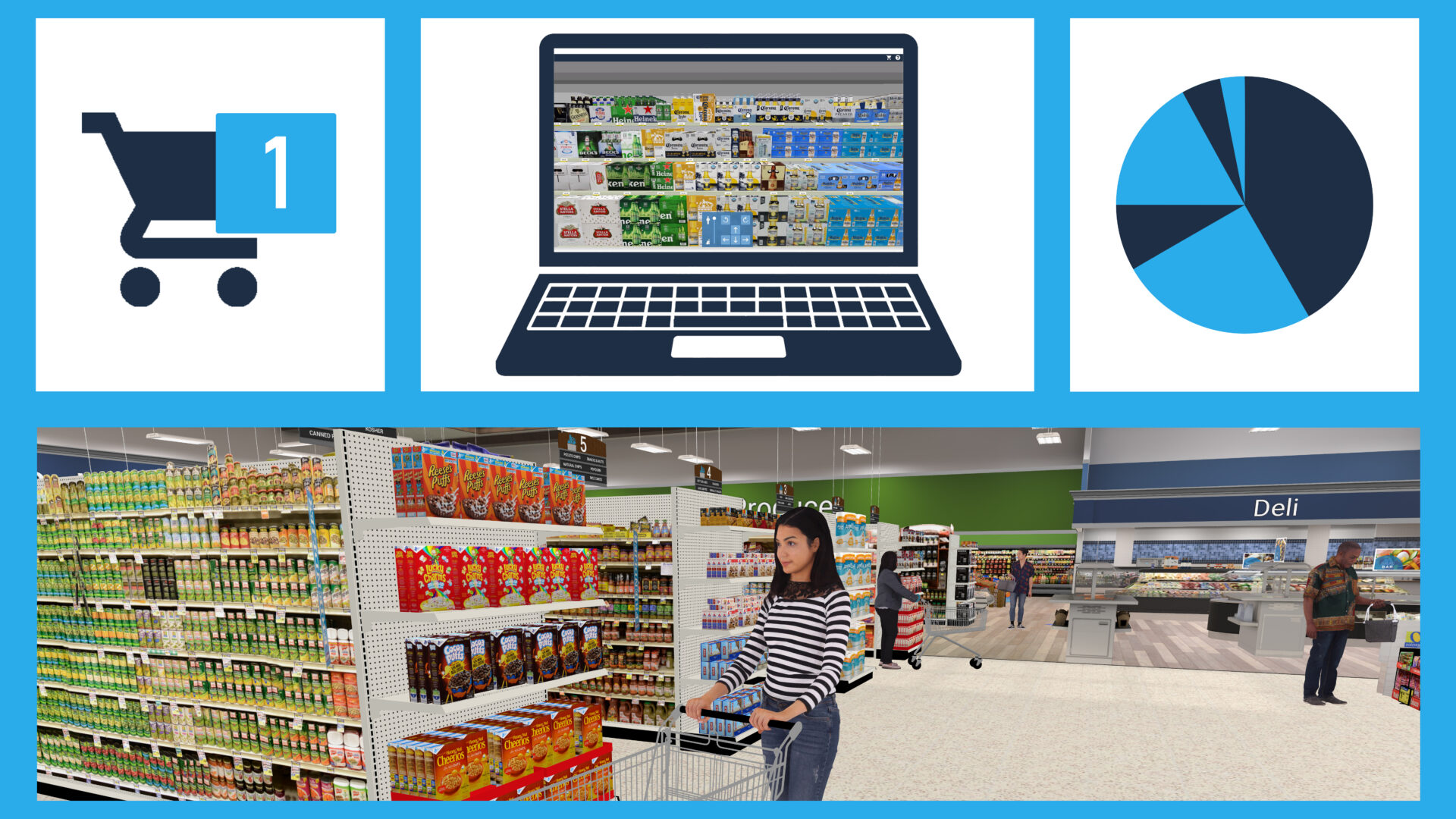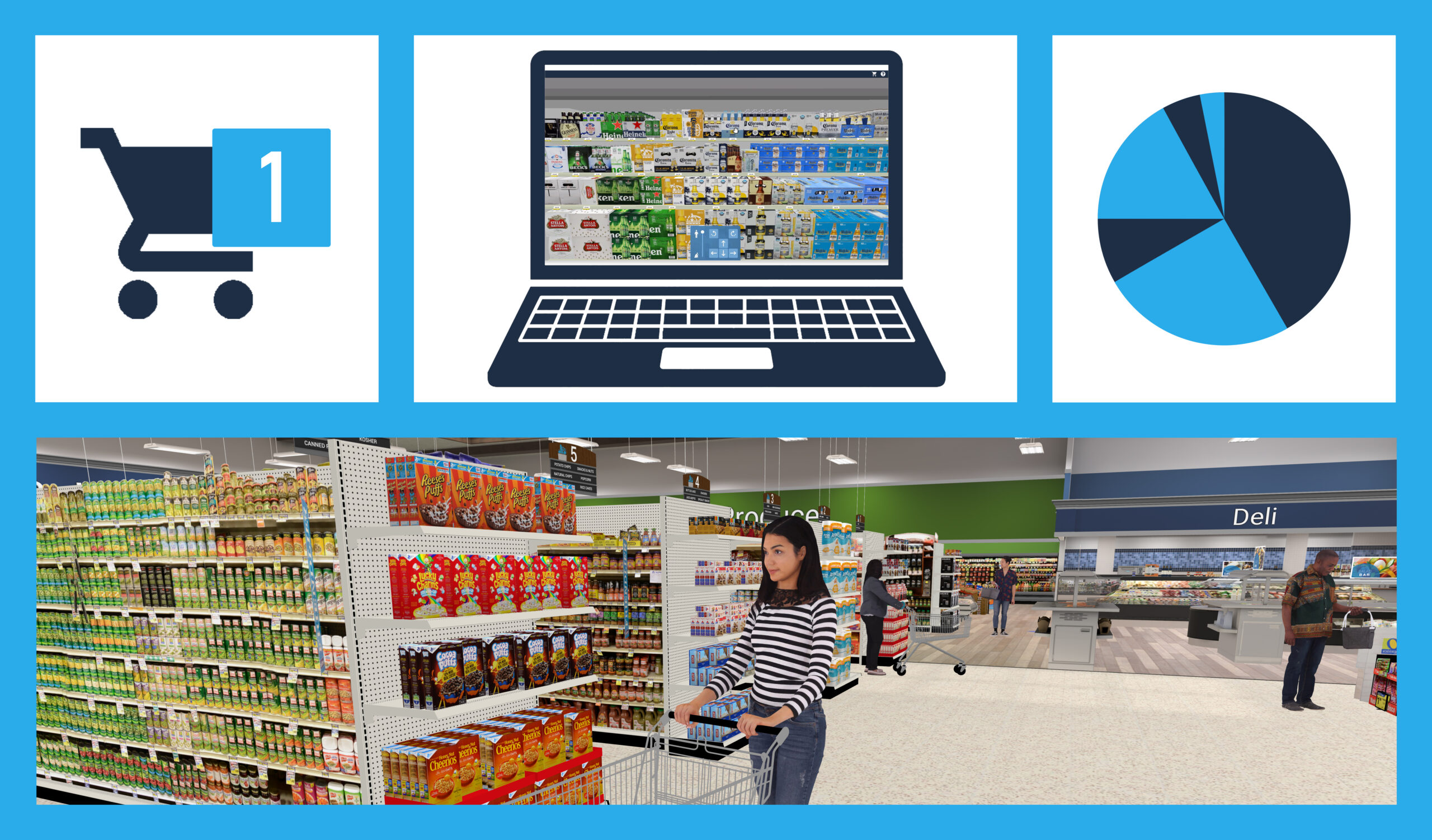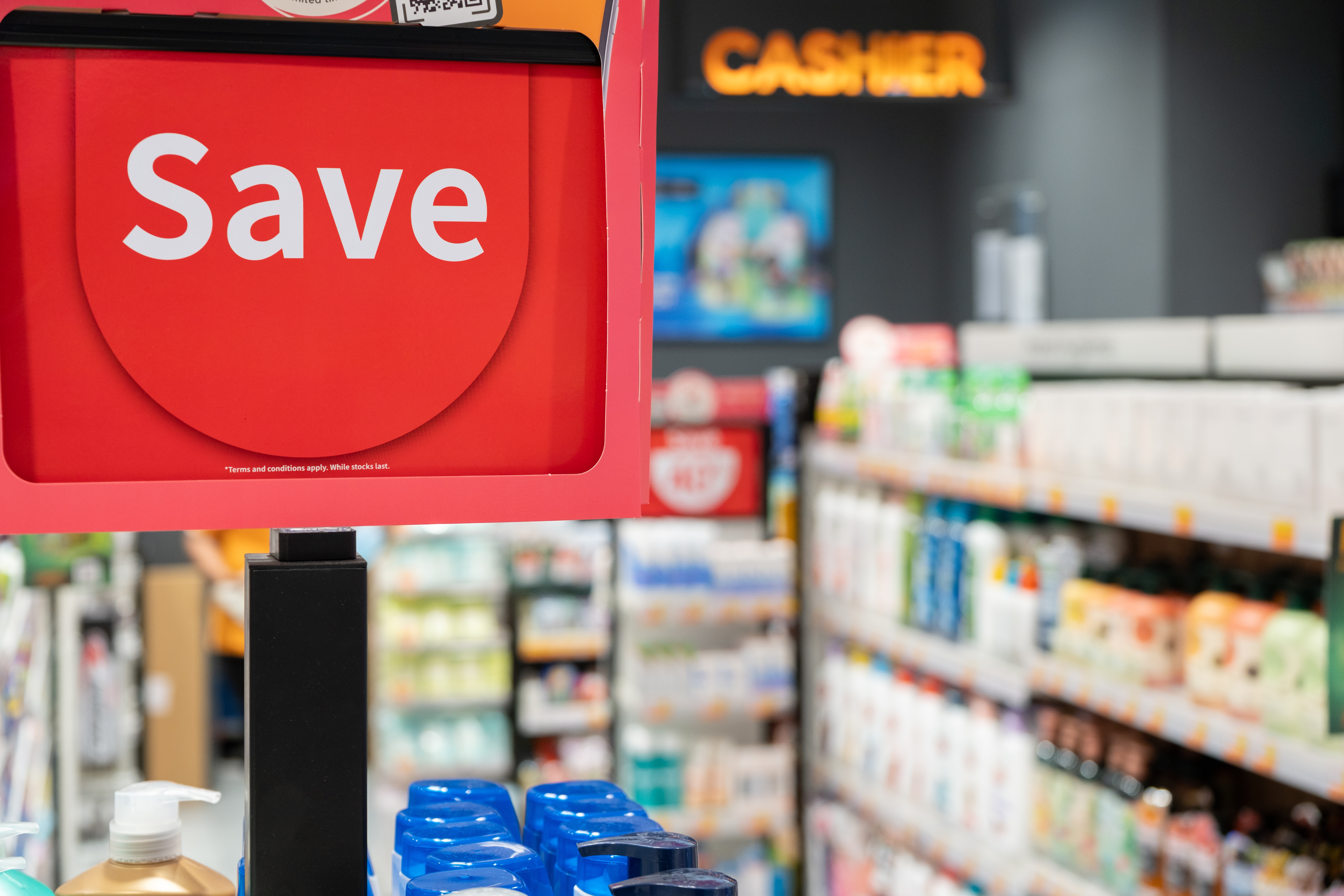Comparison is an essential aspect of all retail decision-making, especially when it comes to merchandising. Retailers and brands need to know how their decisions stack up against their competitors and the industry as a whole. Whether you’re testing out new shelf layouts or considering packaging updates, research benchmarks provide valuable insight into how your plans compare to others in the industry. This blog post will focus on everything you need to know about virtual store research benchmarks. We’ll also explore how InContext’s technology allows for a unique and valuable perspective on these measurements.
What are research benchmarks?
Let’s start with the basics—what exactly are research benchmarks? In retail, research benchmarks provide a comparison point for performance measurements. This includes sales, basket size, penetration, and much more.
Merchandising decisions can significantly impact these key performance indicators. And having access to benchmark data is crucial for making informed choices. Benchmark data can come from various sources, including in-store observations or a questionnaire.
It is also important to remember that you should always analyze benchmark data within a specific context. For example, a benchmark for sales in the beauty industry would not apply to the automotive business model.
Historical averages
In order to understand how current performance compares, historical averages are often used as a benchmark. These averages can be calculated for a specific store, brand, or even the entire industry. By tracking and analyzing data over time, retailers and brands can gain insight into trends and market shifts.
As such, benchmarks use data from recent years for category management, assortment planning, and other strategic decision-making.
Types of benchmark data
When looking at benchmarks for business decisions, you might come across several different types of data.
- Performance benchmarks measure specific KPIs such as sales, basket size, and household penetration.
- Experience benchmarks focus on the customer experience, including satisfaction and customer loyalty.
- Process benchmarks measure the efficiency of specific processes within the retail organization. Think providers, product development, or inventory management.
- Financial benchmarks compare financial indicators such as profit margin or operating expenses.
- Digital benchmarks analyze the performance of online shopping. This data analyzes e-commerce platforms like Amazon. They also include social media data and virtual shopping marketing efforts.
Basically, you can use a benchmark for any aspect of retail performance that can be measured and compared.
What to know about InContext benchmark data
InContext is a research company that uses virtual reality technology to create 3D, interactive store environments. Retailers and brands can then test out merchandising decisions in these environments. It allows for a highly realistic and controlled testing environment, with the added ability to gather data on both shopper behavior and attitudes.
Our virtual store platform leverages benchmark data from over six years of our studies, providing a wealth of information on retail performance. You can use our research methods to compare and analyze performance in 50+ product categories. With over 550 studies and 2,000 study cells, our data is comprehensive and constantly growing and updating. In addition, the fact that it comes from virtual store tests means that it is not limited to what exists today or in the past but also includes what could exist in the future.
In short, InContext’s virtual benchmark data can provide a strategic offline advantage for retailers and manufacturers. It offers comparable category metrics to evaluate your ideas against, helping to optimize merchandising efforts.
Key metrics
InContext’s store simulations look at essential metrics falling into three key categories:
Sales: Everything you need to know about how categories are performing will be found here. Average dollar and unit sales, dollars and units per buyer, etc.
Attitude: These metrics look at shopper sentiment. We can provide average ratings for shelf study questions like satisfaction with the experience, likability of the layout, and perceived ease of shopping.
Findability: A big part of retail success is ensuring shoppers can easily find what they’re looking for. Our data looks at how well-established and new products are displayed. Think shelf placement, facings, and category size. This data translates to the median search time and search success rate for specific brands and categories as well as perceived ease of finding the assigned item.
Overall, InContext’s virtual benchmark data offers a comprehensive look at how your idea compares to the historical average, and helps determine whether your new idea–be it a new shelf layout, a new product introduction, or new navigational signage–is worth pursuing in the category and retailer. It provides valuable insights into purchase behavior, guiding retailers and manufacturers toward better decisions.
Covered Categories
Although our data includes shopper insights from over 50 product categories, we currently have the most robust data for the following:
- Snacks (sweet and salty)
- Non-alcoholic beverages (cold and hot)
- Alcoholic beverages (beer, flavored malt beverages, seltzers, etc.)
- Cereal
- Personal Care
- Frozen Food
- OTC Medicine
- Household Cleaners
We collected our data from studies in big-name retailers in North America like Walmart, Kroger, Target, and Walgreens. As a result, our benchmark data applies to a wide range of retail environments. From traditional grocery stores to convenience stores and drug stores, we’ve got you covered.
Remember that these point-of-sales locations vary in layout, assortment, and shopper demographics. This makes our data all the more valuable as it accounts for these differences, allowing for even more accurate comparisons of retail performance. We can help you explore benchmark data by:
Average product price: Look at performance among categories with a similar average price point.
Product physical space: Look at how products’ sizes affect performance.
Product count: The number of SKUs for a particular category can impact sales and findability for different brands.
Shelf space: Does dedicating more space to a category or brand result in better sales and findability? Or is it better to have more options in a smaller amount of shelf space?
Product facings: How does the number of product facings (how many times a product is placed on a shelf) affect sales and findability?
Benchmark data examples
The best way to understand the value of our benchmark data is through examples. Here’s how benchmark data can look:
Retailer:
Category benchmarks can vary widely from retailer to retailer or even more broadly channel to channel. One example is the average dollars spent on beverages in convenience stores – the average in this channel is lower than the average spent in mass merchandiser or grocery stores. This is likely well known, but beyond just beverage sales our benchmark data can help retailers and brands understand the impact retailer or channel differences have on product findability. A particular product or brand is typically easier to find in a convenience store beverage cooler with 100 different beverage products than it is on a mass merchandise store shelf with over 500 different beverage products. But how much better? And how does a new product’s findability compare to existing products within that retailer or channel? By exploring our benchmark data by retailer, we can make more meaningful comparisons to help determine viability of an idea across retail outlets.
Demographics:
Demographic benchmarks look at the shopping cart of a representative sample of customers. It gathers data on their gender, household income, age, and ethnicity.
Do certain age groups or income levels spend more in a particular category? How does this compare to the demographic makeup of the store’s surrounding area? This information can be useful for targeting specific demographics with sales and incentives. It also helps you understand overall purchasing patterns within different groups.
By segmenting our benchmark data by demographics, we can gain a deeper understanding of our customers and how to better serve them.
Why use benchmark data?
Now that we have cleared up the benchmark data available on our platform, let’s talk about why it’s essential to use this information.
Use benchmarks to set relevant goals based on industry standards
Benchmark data methodology gives you an idea of historical test averages for a particular category and metric. It allows you to set more relevant and attainable goals for your store or brand.
Without this data, you might set arbitrary goals that aren’t aligned with what’s currently being achieved in the industry. By using benchmarks, you can make more informed decisions and see where you stand compared to others.
For example, let’s say your store wants to increase sales in the beverage category. Without benchmark data, you might set a goal of a 10% increase in sales without understanding if that’s achievable or not. However, if our benchmark data indicates that the average increase in sales for the beverage category is 2% when you make a layout change or add navigational signage to the aisle, you may want to set a more realistic goal.
Why use InContext benchmark data?
Virtual reality testing offers a host of benefits over traditional shopper research methods. Without the need for a physical store, shopping insights can be gathered in real-time and at a lower cost. The added advantage is testing out different store configurations without the time and expense of actually building them.
Additionally, InContext has gathered benchmark data from our years of conducting virtual reality studies, giving us a deep pool of information to draw on. We have many respondents and a diverse demographic representation, allowing for more reliable data.
We’ve established that a consumer behavior study best reflects real-world shopping habits. Our simulation technology offers just that.
Finally, conducting store tests in virtual environments enables changes to be made and tested quickly. This method allows for more agile decision-making and optimization of store plans. The ability to adapt and respond swiftly is crucial in a rapidly changing retail industry.
Get started with InContext’s benchmark data.
Interested in using our virtual reality information technology and accessing our benchmark data? Contact us to set up a demo and learn more about how we can help improve your retail strategies. Our team is ready to assist you in improving sales, increasing engagement, and driving conversions. Let’s work together to enhance your retail success.





